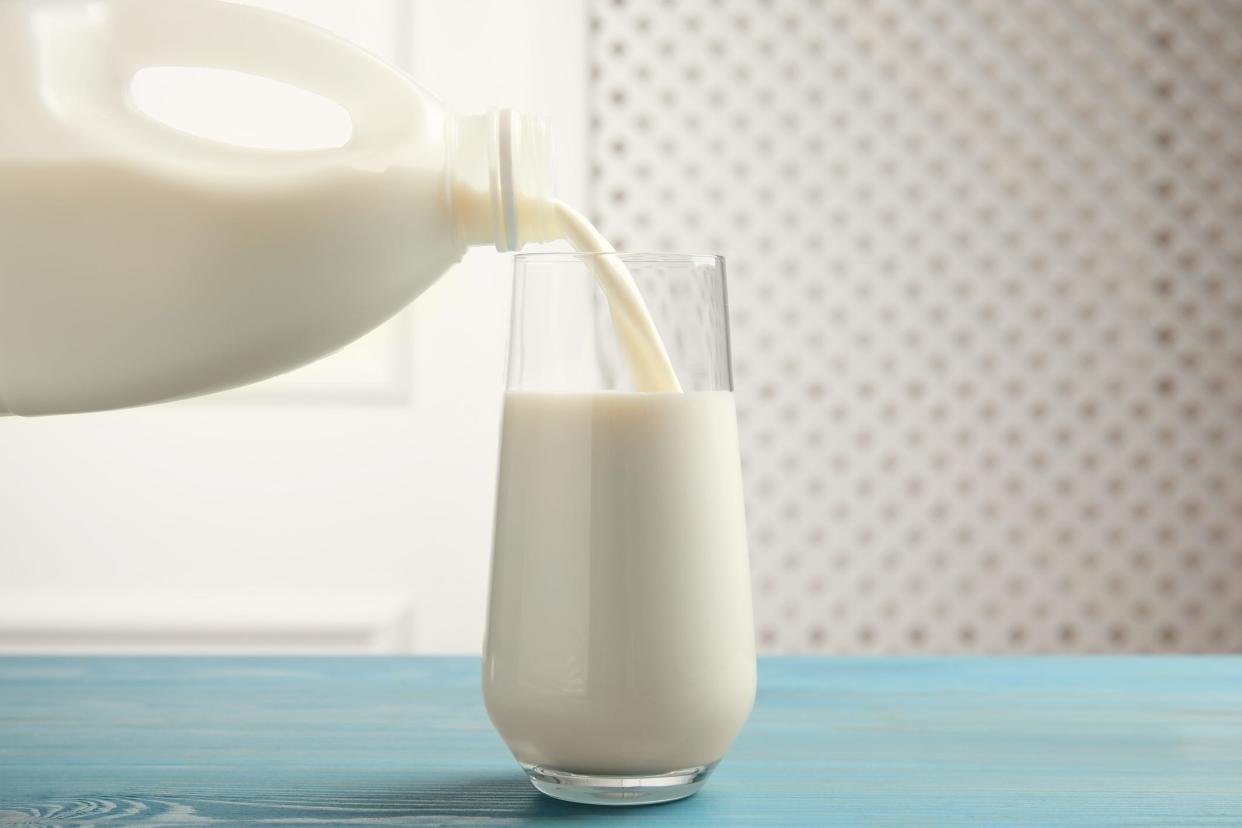The science behind our relationship with the milk we drink

When you were born, you had approximately 1,250,000,000,000 cells in your body. By the time you were six months old, you had about 32 times that amount of cells.
Most of that came from milk — either from your mother or artificially produced as formula. That is remarkable growth from milk, and it is how all mammal babies grow so fast. It is how mammals have done it for the last 310 million years.
Mothers have been feeding their babies milk all this time, then humans came and things got a little strange.
Lactose
As a substance, milk is incredibly nutritious and packs high calories. It’s what makes all baby animals (including human babies) bulk up so quickly. Your body has to process the lactose in milk, which is milk’s version of sugar. However, mammals are only able to digest milk for a very short period of time in their lives — when they are babies.
Mammal babies produce an enzyme called lactase. Lactase breaks down the lactose sugar in milk so it can be absorbed into the body.
As the baby grows, the lactase enzyme decreases and this coincides with when the baby no longer needs milk from its mother. From this point on, most mammals can no longer process milk — and that’s fine because, at this point, they either have left their mothers or are feeding on their own. They don’t drink milk for the rest of their lives.
Then came humans — and farting!
The story of humans and milk was exactly the same as above for most of human existence — until about 6,000 or so years ago.
For whatever strange reason, some first human decided it would be a good idea to drink the milk of another animal. It is hypothesized this occurred as a means of consuming nutrition and calories to stay healthy. Perhaps it was during a time of a drought when food was scarce.
But remember, human adults no longer had the lactase enzyme in their body. Their bodies likely did not agree with what they were drinking and they likely suffered stomach cramps, bloating, and excessive farting!
So why do it? Scientists believe the discomfort was better than the alternative: starving to death. But the fact remains, there is scientific evidence that humans drank animal milk as adults for at least a thousand years despite their bodies protesting.
Evolutionary changes
After about 1,000 years of painfully drinking milk, a chance mutation arose that allowed lactase to stay through adulthood. Because this allowed the adult to drink far more milk with all its nutrients, they lived longer and had more surviving babies that those that drank less milk.
This is how natural selection works and, over long periods of time, more and more humans had the gene that allowed for lactose processing through adulthood.
This was not true everywhere. While most (but not all) adults from Europe can now process lactose, some Asian countries didn’t practice the behavior of drinking milk from animals and, therefore, there was no natural selection pressure towards adult lactase. To this day, Asian countries have a far lower percentage of adults that are lactose tolerant compared to European countries and the United States. This is an evolutionary shift that our behavior caused.
Different animals, different milk
Just as different animals evolved over time, their milk also evolved to produce a formula that was most beneficial to their babies.
Human milk has about 4% fat in it. That is far lower than several species of seal that have 60% fat in their milk. This extra fat in seal milk helps them stay warm in the freezing water.
In contrast, some rhino species have only 0.2% fat, and scientists believe that is because they grow so much slower and take milk from their mothers much longer. Milk of the cottontail rabbit you see in your yard has the most combined protein and fat in it. Scientists believe this allows the baby rabbit to be able to go longer periods of time without food.
Of all the different animal milks out there, pig milk is the closest to what humans now drink. Nutritionally, it is almost the same as cow milk. So why don’t we drink pig milk? Take a look at where the milk comes from on a cow and pig. Pig milk would take much more effort!
Mike Szydlowski is a science teacher and zoo facilitator at Jefferson STEAM School.
TIME FOR A POP QUIZ
1. What is the difference between lactose and lactase?
2. What types of animals provide milk for their babies?
3. Why do mammals only produce lactase for the first part of a baby’s life?
4. Is all animal milk the same? Why or why not?
5. If humans just started drinking animal milk today, do you think natural selection would have worked as quickly to produce lactase in adults? Why or why not?
This article originally appeared on Columbia Daily Tribune: The science behind our relationship with the milk we drink

